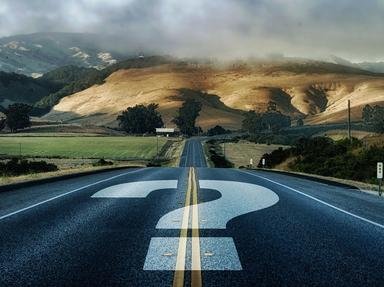Quiz Answer Key and Fun Facts
1. Military history: Known as the "Father of the Panzer Divisions", this German general was born in 1888. He revolutionised tank warfare and achieved spectacular success as commander of the XIX Corps in France and Poland. His Panzer army also won brilliant victories in the early days of the Russian campaign. Despite this, his outspoken nature invariably led to conflict with Hitler and he was dismissed following the Nazi defeat by the Soviets. Name him.
2. Famous Buildings: Perched on top of a craggy mountaintop, the famous castle of Neuschwanstein was built by Ludwig II of Bavaria from 1869 to 1892. To which great German composer did he dedicate the castle, by decorating it with themes from the latter's operas?
3. Hindu Mythology: The epic poem 'Ramayana' tells the tale of Prince Rama's battle with the evil Ravana, who had abducted his consort Sita and fled back to Ceylon. What is the name of the King of Monkeys who aided Rama in his battle, and was in turn rewarded with immortality?
4. Saints: The story of St Joan of Arc is a well-known one. It tells of how a farm-girl, born in 1412 at Domremy, managed to convince the dauphin of France that she had a divine mission to save France. She raised the siege at Orleans, stood beside the dauphin as he was crowned King Charles VII at Rheims, but was eventually betrayed to the English. Where was she imprisoned and interrogated, before being burnt at the stake on 30th May, 1431?
5. Physics: Born in 1905, the American physicist Carl David Anderson worked at the California Insitute of Technology, where he specialised in the field of particle physics. It was for the discovery of this particular subatomic particle that he was awarded the Nobel Prize in 1936 - which particle?
6. Quotations: When the first atomic bomb was detonated in Los Alamos, Robert Oppenheimer was reminded of the following quotation as he stared at the fireball, "I am become death, the destroyer of worlds". What is the literary source of the above quotation?
7. Music: Often paired with Debussy as an 'impressionist composer', this Frenchman was a member of the artistic circle known as 'les Apaches'. Can you name him whose major works include 'Pavane for a Dead Infanta' and 'Bolero'?
8. Art: This Florentine painter cum architect was widely regarded as one of the shining lights even by the high standards of the Renaissance period. Legend has it that when Pope Boniface VIII sent a messenger to him asking for proof of his brilliance, he painted a perfect circle with a single stroke of his brush. Can you name this master of all masters, whose work included fresco cycles in the Arena Chapel at Padua and the Upper Church of S. Francesco at Assisi?
9. Geography: The Americans launch their space shuttles from Cape Canaveral; whereas the Russians do so from the Baikonour Cosmodrome in Kazakhstan. The European Space Agency launches their rockets from the Kourou ground station, located in which South American country?
10. Architecture: Derived from Arabic meaning 'fortress', this is a class of heavily fortified palaces which were built by the Moors in 14th-15th century Spain. Examples of these can be found in Seville, Toledo and Segovia. What is it named?
Source: Author
taygt
This quiz was reviewed by FunTrivia editor
natsim before going online.
Any errors found in FunTrivia content are routinely corrected through our feedback system.


